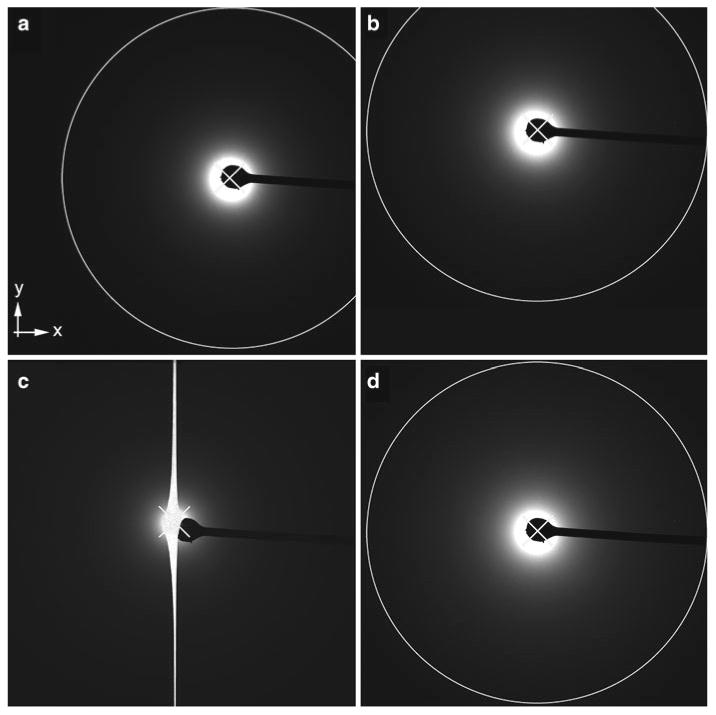Fig. 5.

Alignment of the beam with the beam stop and with the CCD. It is important to align all three elements well; the beam must be at the center of the recordable area of the CCD so that no information will be lost, and the beam stop must be aligned with the beam to prevent damage to the CCD. (a and b) An example of a beam (indicated by an “x”) that is well aligned with the beam stop. The beam, however, is not at the center of the recordable area of the CCD and information on the x-axis or the y-axis is lost (a and b, respectively). (c) An example where the beam is aligned roughly at the center of the recordable area of the CCD but is not aligned with the beam stop. As a result the CCD is oversaturated and bleed-through in the y-axis is observed. (d) Perfect alignment. The beam is at the center of the recordable area of the CCD and directly behind the beam stop. Data to the same resolution can be recorded in all directions as indicated by the circle. In all panels the white X marks the center of the beam.
